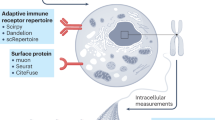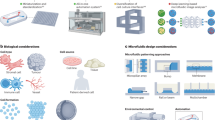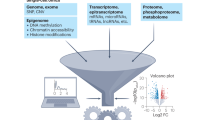Abstract
A decentralized approach to diagnostics can decrease the time to treatment of infectious diseases in resource-limited settings, yet most modern diagnostic tools require stable electricity and are not portable. Here, we describe a portable device for isothermal nucleic acid quantification that can operate with power from electricity, sunlight or a flame, and that can store heat from intermittent energy sources for operation when electrical power is not available or reliable. We deployed the device in two Ugandan health clinics, where it successfully operated through multiple power outages, with equivalent performance when powered via sunlight or electricity. A direct comparison between the portable device and commercial quantitative polymerase chain reaction machines for samples from 71 Ugandan patients (29 of which were tested in Uganda) for the presence of Kaposi’s sarcoma-associated herpesvirus DNA showed 94% agreement, with the four discordant samples having the lowest concentration of the herpesvirus DNA. The device’s flexibility in power supply provides a needed solution for on-field diagnostics.
This is a preview of subscription content, access via your institution
Access options
Access Nature and 54 other Nature Portfolio journals
Get Nature+, our best-value online-access subscription
$29.99 / 30 days
cancel any time
Subscribe to this journal
Receive 12 digital issues and online access to articles
$99.00 per year
only $8.25 per issue
Buy this article
- Purchase on Springer Link
- Instant access to full article PDF
Prices may be subject to local taxes which are calculated during checkout







Similar content being viewed by others
Data availability
All data supporting the findings in this study are available within the Article and its Supplementary Information. Additional data are available from the corresponding authors upon request.
References
Global Health Observatory Data: Top 10 Causes of Death (World Health Organization, accessed 21 July 2017); http://www.who.int/gho/mortality_burden_disease/causes_death/top_10/en/
Urdea, M. et al. Requirements for high impact diagnostics in the developing world. Nature 444, 73–79 (2006).
Jani, I. V. & Peter, T. F. How point-of-care testing could drive innovation in global health. N. Engl. J. Med. 368, 2319–2324 (2013).
Yager, P., Domingo, G. J. & Gerdes, J. Point-of-care diagnostics for global health. Annu. Rev. Biomed. Eng. 10, 107–144 (2008).
Creek, T. L. et al. Infant human immunodeficiency virus diagnosis in resource-limited settings: issues, technologies, and country experiences. Am. J. Obstet. Gynecol. 197, S64–S71 (2007).
2015 Progress Report on the Global Plan Towards the Elimination of New HIV Infections Among Children and Keeping their Mothers Alive (Joint United Nations Programme on HIV and AIDS, 2015); http://www.unaids.org/en/resources/documents/2015/JC2774_2015ProgressReport_GlobalPlan
Calmy, A. et al. HIV viral load monitoring in resource-limited regions: optional or necessary? Clin. Infect. Dis. 44, 128–134 (2007).
Lecher, S. et al. Scale-up of HIV viral load monitoring—seven sub-Saharan African countries. Morb. Mortal. Wkly Rep. 64, 1287–1290 (2015).
Niemz, A., Ferguson, T. M. & Boyle, D. S. Point-of-care nucleic acid testing for infectious diseases. Trends Biotechnol. 29, 240–250 (2011).
Boehme, C. C. et al. Feasibility, diagnostic accuracy, and effectiveness of decentralised use of the Xpert MTB/RIF test for diagnosis of tuberculosis and multidrug resistance: a multicentre implementation study. Lancet 377, 1495–1505 (2011).
Theron, G. et al. Feasibility, accuracy, and clinical effect of point-of-care Xpert MTB/RIF testing for tuberculosis in primary-care settings in Africa: a multicentre, randomised, controlled trial. Lancet 383, 424–435 (2014).
Plate, D. K. Evaluation and implementation of rapid HIV tests: the experience in 11 African countries. AIDS Res. Hum. Retroviruses 23, 1491–1498 (2007).
Cox, H. S. et al. Impact of decentralized care and the Xpert MTB/RIF test on rifampicin-resistant tuberculosis treatment initiation in Khayelitsha, South Africa. Open Forum Infect. Dis. 2, ofv014 (2015).
Garrett, N. J., Drain, P. K., Werner, L., Samsunder, N. & Abdool Karim, S. S. Diagnostic accuracy of the point-of-care Xpert HIV-1 viral load assay in a South African HIV clinic. J. Acquir. Immune Defic. Syndr. 72, 45–48 (2016).
Nicol, M. P. et al. Accuracy of the Xpert MTB/RIF test for the diagnosis of pulmonary tuberculosis in children admitted to hospital in Cape Town, South Africa: a descriptive study. Lancet Infect. Dis. 11, 819–824 (2011).
Piatek, A. S. et al. GeneXpert for TB diagnosis: planned and purposeful implementation. Glob. Health Sci. Pract. 1, 18–23 (2013).
Adair-Rohani, H. et al. Limited electricity access in health facilities of sub-Saharan Africa: a systematic review of data on electricity access, sources, and reliability. Glob. Health Sci. Pract. 1, 249–261 (2013).
Uganda National Household Survey Final Report (2016) (Uganda Bureau of Statistics, 2018); https://www.ubos.org/publications/statistical/23/
Caliendo, A. M. et al. Better tests, better care: improved diagnostics for infectious diseases. Clin. Infect. Dis. Off. Publ. Infect. Dis. Soc. Am. 57, S139–S170 (2013).
Yan, L. et al. Isothermal amplified detection of DNA and RNA. Mol. Biosyst. 10, 970–1003 (2014).
Zhao, Y., Chen, F., Li, Q., Wang, L. & Fan, C. Isothermal amplification of nucleic acids. Chem. Rev. 115, 12491–12545 (2015).
Craw, P. & Balachandran, W. Isothermal nucleic acid amplification technologies for point-of-care diagnostics: a critical review. Lab. Chip. 12, 2469–2486 (2012).
Mori, Y., Kitao, M., Tomita, N. & Notomi, T. Real-time turbidimetry of LAMP reaction for quantifying template DNA. J. Biochem. Biophys. Methods 59, 145–157 (2004).
LaBarre, P. et al. A simple, inexpensive device for nucleic acid amplification without electricity—toward instrument-free molecular diagnostics in low-resource settings. PLoS ONE 6, e19738 (2011).
Singleton, J. et al. Electricity-free amplification and detection for molecular point-of-care diagnosis of HIV-1. PLoS ONE 9, e113693 (2014).
Curtis, K. A. et al. Single-use, electricity-free amplification device for detection of HIV-1. J. Virol. Methods 237, 132–137 (2016).
Song, J. et al. Instrument-free point-of-care molecular detection of Zika virus. Anal. Chem. 88, 7289–7294 (2016).
Liao, S.-C. et al. Smart cup: a minimally-instrumented, smartphone-based point-of-care molecular diagnostic device. Sens. Actuat. B 229, 232–238 (2016).
Craw, P. et al. A simple, low-cost platform for real-time isothermal nucleic acid amplification. Sensors 15, 23418–23430 (2015).
Stedtfeld, R. D. et al. Gene-Z: a device for point of care genetic testing using a smartphone. Lab. Chip. 12, 1454–1462 (2012).
Chang, Y., Cesarman, E., Pessin, M. S. & Lee, F. Identification of herpesvirus-like DNA sequences in AIDS-associated Kaposi’s sarcoma. Science 266, 1865–1869 (1994).
Mesri, E. A., Cesarman, E. & Boshoff, C. Kaposi’s sarcoma and its associated herpesvirus. Nat. Rev. Cancer 10, 707–719 (2010).
Amerson, E. et al. Accuracy of clinical suspicion and pathologic diagnosis of Kaposi sarcoma in East Africa. J. Acquir. Immune Defic. Syndr. 71, 295–301 (2016).
Jiang, L. et al. Solar thermal polymerase chain reaction for smartphone-assisted molecular diagnostics. Sci. Rep. 4, 4137 (2014).
Snodgrass, R. et al. KS-Detect—validation of solar thermal PCR for the diagnosis of Kaposi’s sarcoma using pseudo-biopsy samples. PLoS ONE 11, e0147636 (2016).
Arvanitakis, L. et al. Establishment and characterization of a primary effusion (body cavity-based) lymphoma cell line (BC-3) harboring kaposias sarcoma-associated herpesvirus (KSHV/HHV-8) in the absence of Epstein–Barr virus. Blood 88, 2648–2654 (1996).
Kuhara, T. et al. Rapid detection of human herpesvirus 8 DNA using loop-mediated isothermal amplification. J. Virol. Methods 144, 79–85 (2007).
Nixon, G. et al. Comparative study of sensitivity, linearity, and resistance to inhibition of digital and nondigital polymerase chain reaction and loop mediated isothermal amplification assays for quantification of human cytomegalovirus. Anal. Chem. 86, 4387–4394 (2014).
Kong, J. E. Highly stable and sensitive nucleic acid amplification and cell-phone-based readout. ACS Nano 11, 2934–2943 (2017).
Notomi, T. et al. Loop-mediated isothermal amplification of DNA. Nucleic Acids Res. 28, e63 (2000).
Nagamine, K., Hase, T. & Notomi, T. Accelerated reaction by loop-mediated isothermal amplification using loop primers. Mol. Cell. Probes 16, 223–229 (2002).
Acknowledgements
We would like to thank P. Namaganda, M. Laker-Oketta, H. Byakwaga, P. Kyomuhangi, E. Mande and O. Mbabazi for their work at the Infectious Diseases Institute. We also thank O. Imsdahl, J. Gutierrez and J. Sullivan (Cornell University) for assistance in fabrication of the TINY prototypes. Special thanks to M. Kirya for assisting during visits of rural Ugandan health clinics in July 2016. This work was performed in part at the Cornell NanoScale Facility, a member of the National Nanotechnology Coordinated Infrastructure (NNCI), which is supported by the National Science Foundation (grant ECCS-1542081). The authors acknowledge support for this research from the US National Cancer Institute under grant UH2 CA202723. This study is based upon work supported by the National Science Foundation Graduate Research Fellowship under grant no. 1144153.
Author information
Authors and Affiliations
Contributions
R.S. and A.G. wrote the manuscript with review from all other authors. R.S., V.K., J.D., E.C. and D.E. developed the TINY device. All authors were responsible for design of experiments. R.S., A.G. and J.D. conducted experiments. A.S. and J.M. coordinated collection of human samples. R.S. and A.G. analysed the data. R.S. generated the figures and tables.
Corresponding authors
Ethics declarations
Competing interests
The authors have submitted a patent for the TINY system.
Additional information
Publisher’s note: Springer Nature remains neutral with regard to jurisdictional claims in published maps and institutional affiliations.
Supplementary information
Supplementary Information
Supplementary methods, figures and tables
Rights and permissions
About this article
Cite this article
Snodgrass, R., Gardner, A., Semeere, A. et al. A portable device for nucleic acid quantification powered by sunlight, a flame or electricity. Nat Biomed Eng 2, 657–665 (2018). https://doi.org/10.1038/s41551-018-0286-y
Received:
Accepted:
Published:
Issue Date:
DOI: https://doi.org/10.1038/s41551-018-0286-y



